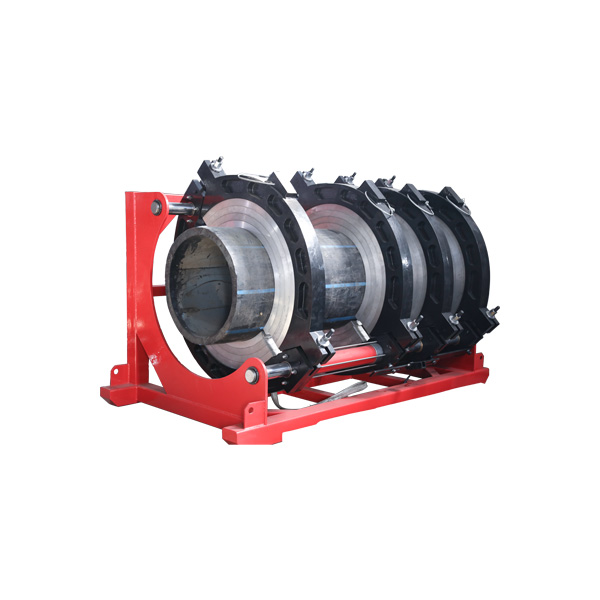Contact us

Appearance defects (surface defects) are defects that c […]
Appearance defects (surface defects) are defects that can be found from the surface of the workpiece without the aid of instruments. Common appearance defects include undercuts, weld bumps, depressions and welding deformations, and sometimes surface pores and surface cracks. The root of single-sided welding is not penetrated, etc.
visit:https://www.chbuttfusionweldingmachine.com
1. Undercut refers to the depressions or grooves formed in the base material along the weld toe. It is the gap left by the arc melting the base material at the edge of the weld and not being fully supplemented by the deposited metal. The main reason for undercut is that the arc heat is too high, that is, the current is too large and the speed of the strip is too small. Incorrect angle between electrode and workpiece, unreasonable swing, long arc, unreasonable welding sequence, etc. will cause undercut. The magnetic bias of the arc during DC welding is also a cause of undercut. Certain welding positions (vertical, horizontal, and upward) will increase undercut. The undercut reduces the effective cross-sectional area of the base material and reduces the load-bearing capacity of the structure. At the same time, it also causes stress concentration and develops into a crack source.
Measures to prevent undercuts: correcting the operating posture, selecting reasonable specifications, and adopting a good way of transporting will all help eliminate undercuts. When fillet welds are welded, alternating current welding instead of direct current welding can also effectively prevent undercut.
2. Welding The liquid metal in the welding seam flows to the unmelted base material under heating or overflows from the root of the welding seam, and the metal nodule formed after cooling that is not fused with the base metal is the welding bead. Excessive welding specifications, too fast welding rod melting, poor welding rod quality (e.g. eccentricity), unstable welding power supply characteristics and improper operating posture are all likely to cause welding defects. It is easier to form weld bead in the horizontal, vertical and upward positions. Welding bumps are often accompanied by non-fusion and slag inclusion defects, which can easily lead to cracks. At the same time, the weld bead changes the actual size of the weld, which will cause stress concentration. Welding bumps on the inside of the pipe reduce its inner diameter, which may cause blockage by fluids.
Measures to prevent welding bumps: keep the weld in the flat welding position, correctly select the specifications, use the non-eccentric welding rod, and operate rationally.
3. Pit
The pit refers to the part of the surface or back of the weld that is lower than the base material. The pits are mostly caused by the welding rod (welding wire) not staying for a short time when the arc is closed (the pits at this time are called arc pits). When vertical and horizontal welding, the root of the back of the weld is often concave. The pit reduces the effective cross-sectional area of the weld, and the crater often has crater cracks and crater shrinkage holes.
Measures to prevent pits: Choose a welding machine with a current attenuation system, try to choose a flat welding position, choose a suitable welding specification, and let the welding rod stay in the molten pool for a short time or swing in a ring when closing the arc to fill the arc pit.
4. Not fully welded
Under-welded refers to continuous or intermittent grooves on the surface of the weld. Insufficient filler metal is the root cause of insufficient welding. The specification is too weak, the welding rod is too thin, improper handling of the rod, etc. will lead to insufficient welding. Incomplete welding also weakens the weld, which is prone to stress concentration. At the same time, because the specification is too weak, the cooling rate increases, and it is easy to cause pores and cracks.
Measures to prevent under-welding: increase the welding current, and add welding cap welds.
5. Burn through
Burn-through means that during the welding process, the penetration depth exceeds the thickness of the workpiece, and the molten metal flows out from the back of the weld, forming a perforation defect. If the welding current is too large, the speed is too slow, and the arc stays at the weld for too long, burn-through defects will occur. If the gap between the workpieces is too large and the blunt edge is too small, it is easy to burn through. Burn-through is an impermissible defect in boiler pressure vessel products. It completely destroys the weld seam and causes the joint to lose its connection flying and carrying capacity.
Measures to prevent burn-through: Choose a smaller current and match the appropriate welding speed to reduce the assembly gap, add a backing plate or a pad on the back of the weld, and use pulse welding to effectively prevent burn-through.
6. Other surface defects:
(1) Poor forming
Refers to the appearance geometry of the weld does not meet the requirements. There are ultra-high welds, uneven surface, and wide welds, and the transition from weld to base metal is not smooth.
(2) Wrong side
Refers to two workpieces staggered by a certain position in the thickness direction, which can be regarded as a weld surface defect, but also as an assembly forming defect.
(3) Collapse
In single-sided welding, because the input heat is too large and the molten metal is too much, the liquid metal collapses to the back of the weld. After forming, the back of the weld protrudes and the front collapses.
(4) Surface pores and arc crater shrinkage.
(5) Various welding deformations such as angular deformation, twisting, wave deformation, etc. are all welding defects. Angle deformation is also an assembly forming defect.


Quick Links
Products
Contact Us

